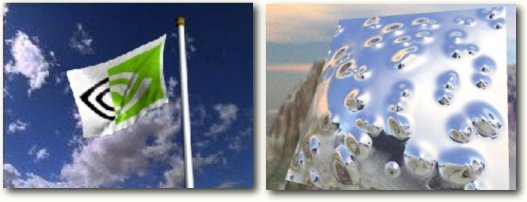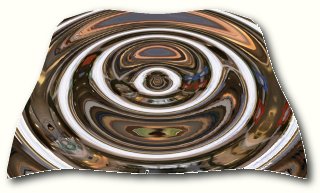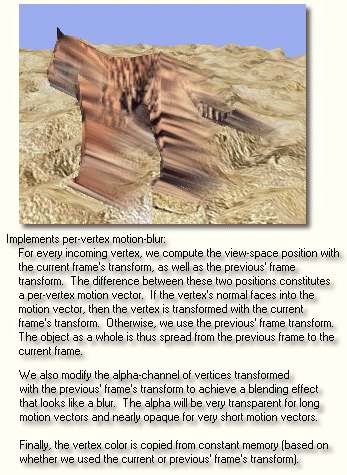High-Tech And Vertex Juggling - NVIDIA's New GeForce3 GPU
Procedural Deformation
Procedural deformation means that an e.g flat or 'normally' shaped object changes its shape with a special procedure. This can be dynamic (in most cases) as well as static. A typical example would be waves on a water surface, a flag waving in the wind or (static) a metal object hit by gunshots.
Per-Vertex Motion Blur
Different to 3dfx's approach of producing a motion blur effect rather costly with the T-buffer (costing expensive fill rate), the same effect can also be produced by the vertex shader. Vertices with their normal (the vector orthogonal to its surface position) pointing into the direction of the motion are not changed, the coordinates of vertices with their normal pointing 'backwards' are replaced by the transformed coordinates the same vertex had in the previous frame, which has the effect that the object is stretched 'backwards'. Depending on the motion vector's length (=speed of the object) the alpha value of the vertex is reduced, making it partly see-thru and blurry. You have to admit that it looks very 'realistic'.
Get Tom's Hardware's best news and in-depth reviews, straight to your inbox.
Current page: Procedural Deformation
Prev Page Programming The Vertex Shader, Continued Next Page Setup For Dot Product Bump Mapping (Per Pixel Bump Mapping)

